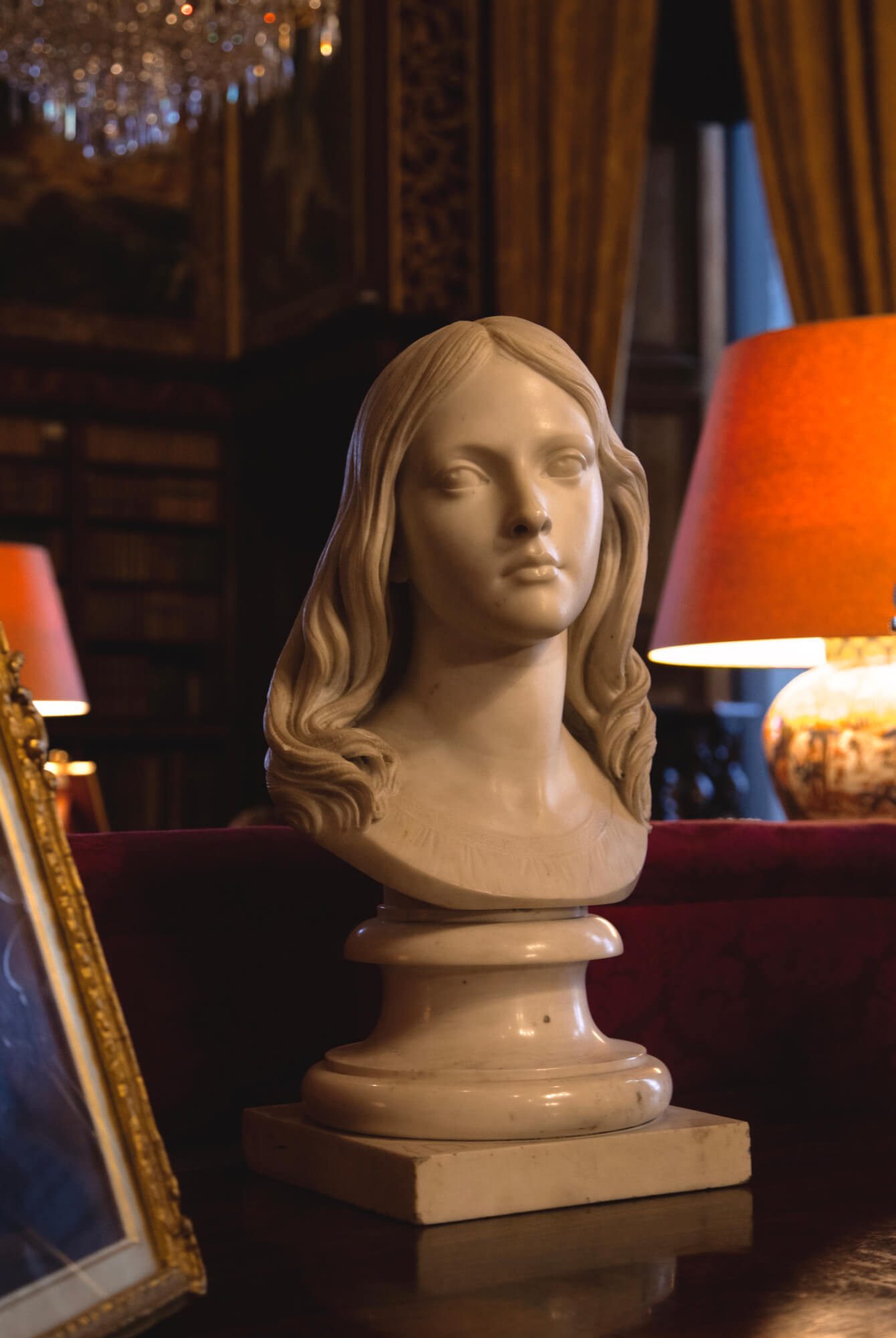There’s never a quiet moment in the Eastnor library. Even if you sit alone, thumbing through one of the many gold-edged books by history’s greatest writers, it feels alive – the ticking of an antique clock on the desk, the periodic chimes of distant grandfather clocks, dust motes twirling through a long shaft of afternoon light.
It’s even more alive when filled with people. As recently as last month, some of the country’s greatest minds gathered to debate current artistic movements, works of literature and the future of design, lacing the air with laughter and lines of poetry. And in the 19th century, one such presence was Julia Stephen – model, muse, mother of Virginia Woolf and a member of a powerful network of women writers and artists. A familiar face at Eastnor, Julia now remains in the library in another form: a marble bust, perched atop a desk in the very room she once frequented.
Julia’s artistic world revolved around Little Holland House in London’s Kensington, home of painter and sculptor George Frederic Watts and the favoured haunt of the Pre-Raphaelites, writers such as Anne Thackeray Ritchie, as well as Julia’s maternal aunt, the pioneering photographer Julia Margaret Cameron.
Although she authored one book, Notes from Sick Rooms, Julia Stephen is best remembered through the works of others – the 50 photographs taken by Cameron, the writings of her husband Leslie and daughter Virginia, and the enigmatic bust that now resides at Eastnor.
The sculpture is one of Eastnor’s many mysteries. We don’t know where it came from, or even who made it. But we do know it is carved from marble and was completed around 1865, and that it likely arrived in the library through Julia’s aunt, Virginia Somers, who married Viscount Eastnor in the mid-19th century.
Like Julia, Virginia was celebrated for her beauty – so much so that William Thackeray dedicated a column to her in Punch magazine. Her wedding to the viscount in 1850 dismayed Thackeray, who nevertheless concluded: "She looked beautiful and has taken possession of Eastnor Castle and her rank as Princess and reigns to the delight of everybody”.
Virginia wasn’t quite a princess, but she loved to entertain. Eastnor thrived under her watch, filled with conversation, art and companionship. Julia was among the guests, even spending her honeymoon at the castle after marrying her second husband, biographer Leslie Stephen. It’s easy to picture the sisters sweeping through the library arm in arm, pulling novels from the shelves, or at their Little Holland House gatherings sat next to the fire, sipping champagne and discussing Thackeray’s latest musings. Sometimes, it’s as though they’ve just stepped out for a moment.
Yet, despite her literary and artistic connections, little remains of Julia’s own voice. We know she was an opponent of women’s suffrage, arguing in her essay Agnostic Women that men and women belonged in separate spheres – though she saw neither as superior. We know she devoted herself to nursing the sick in hospitals and workhouses, experiences she recorded in her book. But above all, Julia was a muse, a captivating face that embodied Victorian ideals of beauty and grace, and an enduring presence in the Pre-Raphaelite artistic circles.
Perhaps that is what the unknown sculptor attempted when they carved her likeness. Not to capture her convictions or her work, but to immortalise her in this place of creative greatness. And so she remains at Eastnor, silent but ever present, still surrounded by the greats.
